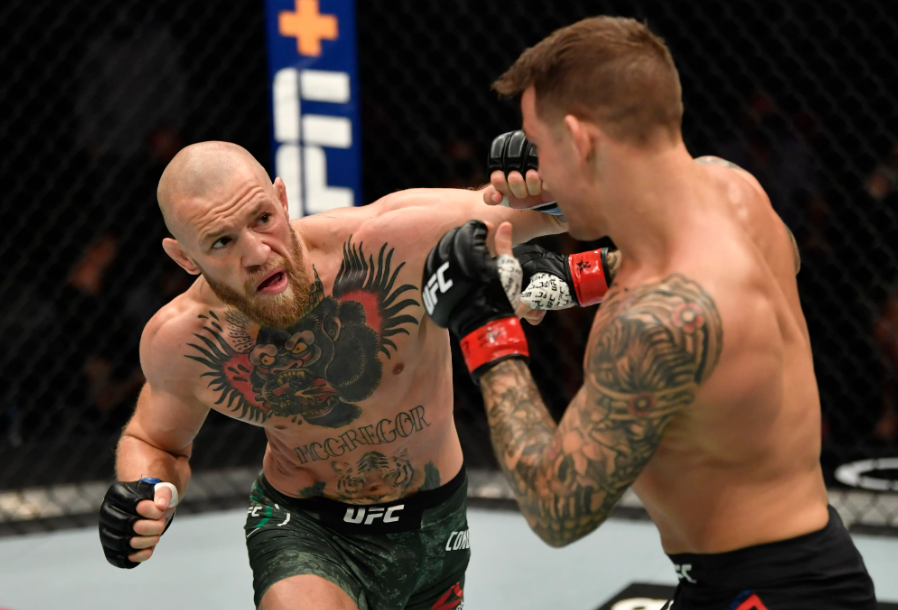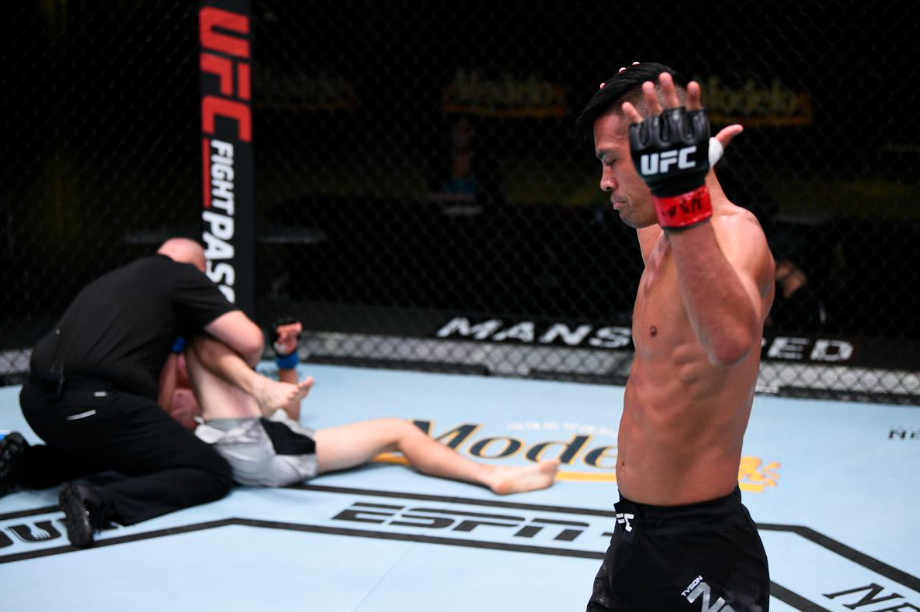Mixed Martial Arts (MMA) has emerged as one of the most exciting and popular combat sports in recent decades. It has captured the imagination of fans around the world, offering a unique blend of various fighting disciplines and techniques. The Ultimate Fighting Championship (UFC), often considered synonymous with MMA, is the premier organization that has played a pivotal role in popularizing the sport. Its rise from humble beginnings to global prominence is a testament to the enduring appeal of combat sports. This article aims to delve into MMA vs UFC, exploring their histories, core principles, impact on popular culture, and the key differences that distinguish them as a sport and organization.

The Basics of MMA
MMA has ancient roots, with various forms of mixed combat found throughout history in different cultures. From the Greek sport of Pankration to various forms of hybrid fighting in Asia, the idea of blending different martial arts is not a recent development.
Modern MMA, as we know it today, started to take shape in the 20th century. The sport gained recognition in Brazil with the development of Brazilian Jiu-Jitsu and began to spread to other parts of the world.
Core Principles of MMA
Multiple Fighting Disciplines
MMA incorporates a wide array of fighting styles, including boxing, kickboxing, Brazilian Jiu-Jitsu, wrestling, Muay Thai, and others. Fighters must be well-versed in multiple disciplines to succeed.
Unified Rules of MMA
The Unified Rules of MMA, established by the New Jersey State Athletic Control Board in 2001, serve as the standardized regulations governing the sport. These rules emphasize fighter safety and fairness, contributing to the sport’s credibility.
The Basics of UFC
The UFC was founded in 1993 by Rorion Gracie, Art Davie, and John Milius. It was conceived as a way to determine the most effective martial art in a real combat situation.
The early UFC events were unique and controversial. They featured open-weight tournaments where fighters from various backgrounds competed in a no-holds-barred, limited-rules format, making for intense and often brutal showdowns.
Core Principles of UFC
Open-Weight Tournaments
The original UFC tournaments allowed fighters of vastly different sizes and styles to compete against each other, showcasing the effectiveness of different martial arts.

No-Holds-Barred and Limited Rules Era
In the early days, the UFC had few rules, leading to gruesome injuries and controversies. This era, however, drew a significant amount of attention and generated curiosity about the sport.
Evolution Towards a More Regulated Sport
To gain mainstream acceptance and ensure fighter safety, the UFC transformed in the early 2000s. It adopted weight classes, more rules, and stringent safety measures.
UFC and Its Impact
The UFC has produced global superstars and become a commercial juggernaut, dominating the world of mixed martial arts with its TV deals and Pay-Per-View events. Its influence extends beyond the octagon, leaving an indelible mark on pop culture.

Building Stars
The UFC has been instrumental in nurturing and promoting stars within the world of mixed martial arts. Fighters like Conor McGregor, Ronda Rousey, and Anderson Silva have transcended the sport to become global icons. The organization’s marketing efforts, coupled with fighters’ charisma and talent, have propelled them into the mainstream. These stars not only achieve unparalleled success within the octagon but also leverage their fame into various entertainment, endorsement, and business opportunities, making them household names and further solidifying the UFC’s status as a cultural phenomenon.
Television and Pay-Per-View (PPV) Dominance
The UFC’s television and Pay-Per-View (PPV) dominance is a testament to its global appeal. The organization has struck numerous lucrative TV deals, broadcasting live UFC events to millions of viewers worldwide. PPV events, in particular, have been a major revenue generator, with blockbuster fights drawing record-breaking buy rates. The UFC’s ability to consistently deliver exciting matchups and narratives has made it a staple in the sports and entertainment world, solidifying its position as the premier destination for combat sports enthusiasts and a juggernaut in the industry.
Sponsorships, Merchandising, and Business Ventures
In the quest to demystify the MMA vs UFC narrative, it is important to note that the UFC has capitalized on its global appeal, securing a plethora of lucrative sponsorships from renowned brands. Fighters, in turn, have benefited from personal sponsorships. Merchandising has also been a significant revenue source, with a wide range of branded products, from apparel to collectibles, contributing to the UFC’s financial success. Additionally, the UFC has ventured into various businesses, including fitness facilities, streaming services, and video games, further expanding its commercial reach and establishing itself as a dominant force in the world of combat sports.
UFC’s Influence on Pop Culture
The UFC’s crossover into mainstream pop culture has seen fighters appearing in movies, TV shows, and video games. It has become a cultural phenomenon, with fans from all walks of life. The organization’s octagon has become a symbol of high-stakes competition, inspiring references in popular culture. The UFC’s catchphrases, such as “Octagon” and “Fight Island,” have permeated everyday language. It has created a significant cultural impact, uniting fans worldwide and making mixed martial arts an integral part of contemporary entertainment and conversations.
MMA and Its Influence
MMA has birthed a new generation of charismatic fighters, capturing global audiences through their diverse skills and personalities. Its growing presence has not only inspired athletes but also embedded itself in movies and entertainment, leaving a significant cultural impact.
Rising Stars in the World of MMA
The world of MMA continues to produce a fresh generation of rising stars. Fighters like Israel Adesanya, Kamaru Usman, and Amanda Nunes have captivated audiences with their skill, charisma, and dedication. They have showcased the sport’s evolution, drawing attention not only for their in-cage performances but also for their personalities and work ethic. These emerging talents bring a new level of excitement to MMA, promising a bright future for the sport with captivating rivalries and memorable moments that keep fans engaged and eager for more.
Television Exposure and Pay-Per-View Events
Television exposure and pay-per-view (PPV) events have propelled MMA into the global sporting spotlight, further fueling the MMA vs UFC division. Major promotions like the UFC, Bellator, and ONE Championship have secured significant TV deals, allowing MMA to reach a vast and diverse audience. PPV events, in particular, have become a linchpin of the sport’s financial success, offering fans premium access to highly anticipated matchups. This combination of television and PPV has not only bolstered the sport’s visibility but also contributed to its meteoric rise, making MMA a powerhouse in the world of combat sports.
Sponsorships, Merchandising, and Commercial Endeavors
The differences between MMA and UFC continue even into the commercial aspect of the sport. Sponsorships, merchandising, and commercial endeavors have all become pivotal components of MMA’s thriving ecosystem. Fighters have attracted lucrative sponsorships from prominent brands, while MMA organizations have also secured significant partnerships, bolstering the sport’s financial strength. Merchandising, including clothing, equipment, and collectibles, has created a profitable market for fans and enthusiasts. Moreover, the sport’s expansion into gyms, fitness programs, and digital platforms demonstrates its commercial growth, solidifying MMA’s place in the mainstream and enhancing its prospects as a long-term success story.
MMA’s Cultural Impact
MMA’s cultural impact has been profound. It has not only reshaped the landscape of combat sports but also transcended boundaries to become a global phenomenon. MMA gyms, training facilities, and academies have proliferated, making martial arts accessible to a broader demographic. The sport has inspired a new generation of athletes and fans, fostering a sense of discipline, respect, and physical fitness. Its presence in movies, TV shows, and video games has further embedded MMA in popular culture, leaving an indelible mark on society as a whole.
MMA vs. UFC: Key Differences
Here are a few differences between MMA and UFC:
The Sport vs. the Organization
At its core, the fundamental difference between MMA and the UFC lies in their nature and purpose. MMA, or Mixed Martial Arts, is the sport itself, an amalgamation of various fighting styles and disciplines. It encompasses the essence of combat sports, where fighters test their skills and techniques in the cage. On the other hand, the UFC, or Ultimate Fighting Championship, is a specific organization that promotes and hosts MMA events. While the UFC is synonymous with MMA for many, it’s essential to recognize that there are various MMA organizations globally, each with its roster of fighters and unique events.
Rules and Regulations
Another crucial point in the differences between MMA and UFC is in the rules and regulations governing the sport. MMA adheres to the Unified Rules of MMA, a standardized set of guidelines aimed at ensuring fighter safety and fair competition. The UFC, particularly in its early years, operated with fewer rules and in a no-holds-barred fashion, which contributed to its reputation and controversy. However, over time, the UFC evolved to adhere to the Unified Rules, adopting weight classes and more comprehensive regulations.
Global Reach and Recognition
The UFC, due to its pioneering efforts and consistent growth, enjoys unparalleled global recognition and reach. It has secured broadcast deals in numerous countries and has a dedicated fan base worldwide. On the other hand, MMA, as the sport, is practiced and promoted by various organizations worldwide, each with its unique approach, regional focus, and fan base. While the UFC remains the most renowned and widely recognized MMA organization, other promotions such as Bellator, ONE Championship, and PFL have gained recognition within their respective regions. This diversity of MMA organizations adds depth and variety to the sport’s landscape.
Conclusion
MMA’s ascent from a niche sport to a global phenomenon showcases its enduring appeal. It has attracted a diverse fan base and continues to evolve. The UFC’s role in popularizing and legitimizing MMA cannot be overstated. It has provided a platform for fighters to showcase their skills on a global stage and helped the sport grow. Therefore, the quest to understand the MMA vs UFC conversation is unending. One thing is clear, though: the future of combat sports is brighter than ever.

Nancy is a journalist with passion for technology. In her 12 years of experience, she has crafted some of the most detailed pieces that describe the importance, benefits, and progress happening in the technology world.













